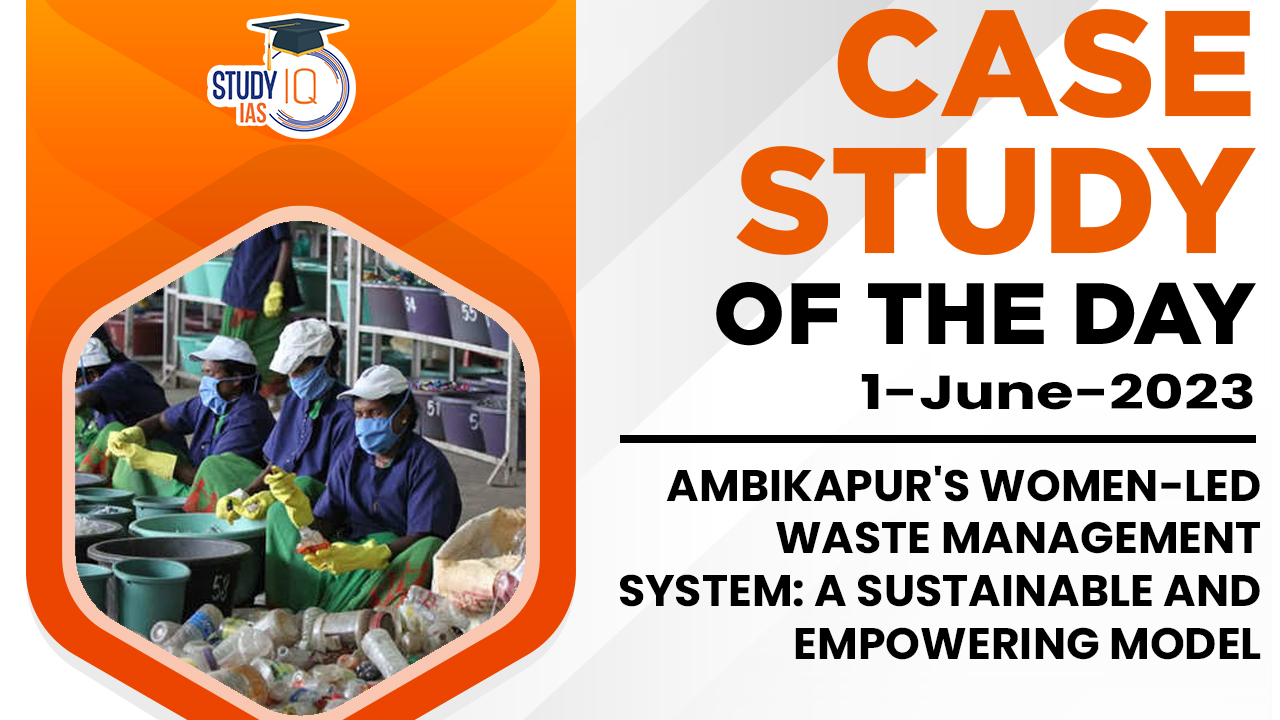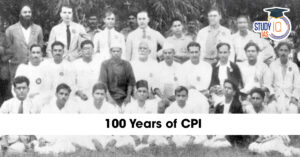Table of Contents
Introduction
- Ambikapur has faced significant challenges with waste management, including inadequate infrastructure, inefficient collection systems, and environmental degradation.
- In response to these issues, the municipal government implemented a unique waste management model in 2015, placing women at the forefront of the initiative.
Key Elements of the Women-led Waste Management System
- Employment and Training: Women were recruited as waste collectors and segregators, receiving comprehensive training on waste segregation, recycling, composting, and overall waste management techniques.
- Waste Collection and Segregation: Under the women-led system, waste collection and segregation occur at the household level. Women waste collectors use specially designed carts to collect waste from households, ensuring proper separation of recyclable, organic, and non-recyclable waste.
- Recycling and Composting Units: Ambikapur established recycling and composting units managed by women. The recyclable waste is sent to these units, where it is sorted, processed, and transformed into valuable materials.
- Organic waste is processed into compost, which is used for agricultural purposes, reducing the reliance on chemical fertilizers.
- Incentive-Based System: To encourage waste segregation and proper disposal, Ambikapur introduced an incentive-based system. Women waste collectors receive monetary incentives based on the quantity and quality of waste collected, motivating them to ensure effective waste management.
Benefits of the Women-led Waste Management System
- Environmental Sustainability: The system has significantly reduced the amount of waste sent to landfills, minimizing environmental pollution and land degradation. The emphasis on recycling has helped conserve natural resources and reduce energy consumption.
- Improved Health and Sanitation: Proper waste management has led to cleaner streets and a healthier living environment. By separating waste at the source, the system reduces the chances of diseases spreading through waste.
- Livelihood Opportunities: The initiative has empowered women by providing them with stable employment and a source of income. It has enhanced their social and economic standing, enabling financial independence and improving their overall quality of life.
- Community Engagement: The involvement of women in waste management has strengthened community engagement and awareness. The system has sparked a sense of responsibility among residents to actively participate in waste segregation and management practices.
Challenges and Lessons Learned
- Initial Resistance and Stereotypes: The introduction of the women-led waste management system faced scepticism and resistance due to prevailing gender stereotypes. However, continuous awareness campaigns and community engagement helped overcome these challenges over time.
- Infrastructure Development: Ambikapur faced the task of developing the necessary infrastructure for waste segregation, recycling, and composting. It required significant investment and careful planning to establish recycling units, waste collection points, and processing facilities.
- Continuous Training and Capacity Building: Ensuring that women waste collectors stay updated on waste management practices and techniques requires ongoing training and capacity building programs. Regular monitoring and skill development are crucial to maintain the effectiveness of the system.
- Replicability and Scalability: One of the key lessons learned from Ambikapur’s model is the need for replicability and scalability in other cities. Adaptation of this system to different contexts requires a comprehensive understanding of local dynamics and tailoring the approach accordingly.
Conclusion
- Ambikapur’s women-led waste management system has emerged as a remarkable example of sustainable development and gender empowerment.
- By actively involving women in waste management, the city has not only improved its environmental conditions but also empowered women economically and socially.


 100 Years of CPI: Origins, Ideology, Fre...
100 Years of CPI: Origins, Ideology, Fre...
 Santhali Language: History, Script, Cons...
Santhali Language: History, Script, Cons...
 How African Reserves Eliminated Rhino Po...
How African Reserves Eliminated Rhino Po...

























